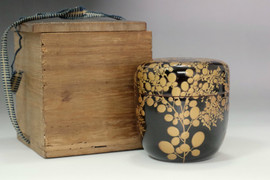Antique Japanese lacquered Noh mask #5187
- SKU:
- 5187
- Shipping:
- Free Shipping
Size: approx Width: approx. 17cm (6 11⁄16in) x 20.5cm (8 5⁄64in) x 12cm (4 23⁄32in)
Wright: 445g
Noh is a form of classical musical drama in Japan, and its present-day form came into existence during the Muromachi Period. Kanami developed a form of Noh called Sarugaku, and Noh became popular under the patronage of the third Ashikaga Shogun, Ashikaga Yoshimitsu. During the era of the Tokugawa Shogunat, Noh received official recognition as a national form of performing art that was used in official rituals. A lot of daimyo lords loved it very much. Noh masks are used by the main character, or the “shite,” and accompanying performers called the “tsure.” They are used to portray divinities, demonic divinities, vengeful ghosts, and other characters, on top of female characters that involve aesthetic expressions. Noh plays can be divided roughly into the following main categories: Okina and the elderly, the demonic divinities, the females, the males, and the vengeful ghosts. It is said that there are some 70 basic forms of Noh plays if they are categorized by name (for example, Koomote and Hannya). It is said that there are over 200 forms of Noh plays if the white, red, and black Hannya are counted as separate types.
Kyogen is a traditional form of Japanese theater that primarily developed during the Muromachi period. Along with Noh, it constitutes one of the two main elements of Nohgaku. While Noh is solemn and dignified, Kyogen is characterized by its humorous and lighthearted content. Kyogen is cherished as a uniquely Japanese form of comedy, incorporating humor and satire to portray everyday life and human foolishness. The characters often represent common people, such as samurai, farmers, merchants, and monks.














